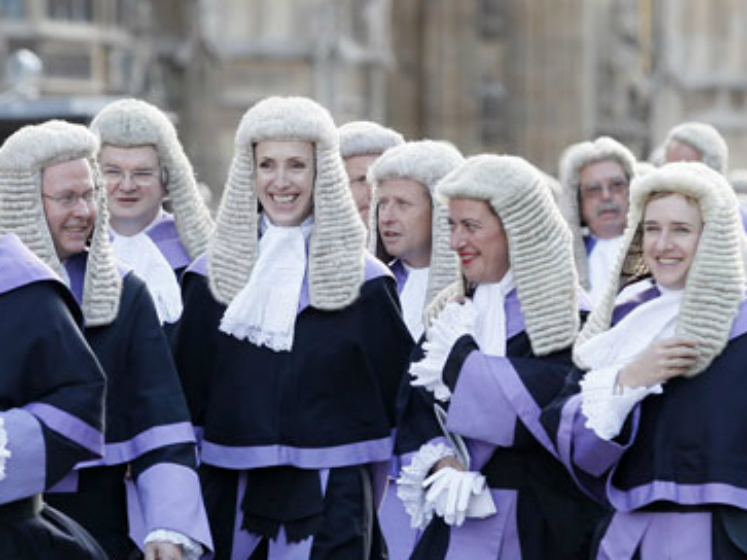 UKSC blog
UKSC blog
Many radical reforms to increase the number of female judges have had little impact, according to new LSE research.
It also found a significant regional variation in the number of female judges appointed, with far fewer in Wales than the South East of England, for example.
The study of Recorder, Circuit Judge and Deputy High Court Judge appointments between 1996-2016 analyses the effect of the creation of the Judicial Appointments Committee (JAC). This took over from the Lord Chancellor in appointing Recorders and Circuit Judges in 2006 and Deputy High Court Judges in 2013.
It also examines other strategies to increase diversity, including encouraging of solicitors to apply (there being a greater proportion of women solicitors than barristers); reducing the amount of prior legal and judicial experience required; removal of minimum age requirements; the introduction of positive discrimination for candidates of equal merit; and changes to the qualifying test.
Dr Michael Blackwell, Assistant Professor of Law at LSE, used Freedom of Information requests and legal directories to gather data. He found that the change with the greatest impact was actually a cost-saving measure rather than a diversity strategy – a drive to appoint more criminal and family specialists, areas where there are a higher proportions of female barristers.
His paper, published in the latest edition of the Journal of Law and Society, notes that the JAC was established due to concerns that the process of appointing judges was too informal, secretive and biased against women.
The research shows a steady increase in the proportion of women both appointed and serving, as well as large regional variations in the proportion of Recorders and Circuit Judges that are female.
In 1996, just six per cent of existing Recorders and six per cent of existing Circuit Judges were female. By 2016, 21 per cent of Recorders and 25 per cent of Circuit Judges were female. However, there are stark regional variations. In Wales, only four per cent of Recorders and three per cent of Circuit Judges were female in 1996, which had increased to 18 per cent and 19 per cent in 2016. The greatest proportion has generally been in the South East where eight per cent of Recorders and five per cent of Circuit Judges were female in 1996, increasing to 22 per cent and 31 per cent in 2016.
The paper says: “Such regional differences are important, since it means that individuals’ encounters with justice are likely to be highly contingent on the part of the country in which their cases are heard.”
Focusing on the transfer of selection from the Lord Chancellor to the JAC, Dr Blackwell found that there was no increase in the numbers of applications from women until three years after it was established, so the introduction of an independent selection process it cannot of itself be said to have made a difference – although changes introduced by the JAC after 2009 may have encouraged more women to apply.
He also criticizes the JAC, saying, its establishment “was meant to create a transparent appointment process. Yet it remains murky.” There has also been a “lurch to secrecy” with the content of the JAC’s qualifying test, he adds.
Reforms to the content of the qualifying tests have made a “substantial difference”, while the relaxation of the requirement for prior judicial experience have made a “noticeable difference”, the paper finds.
However, the introduction of equal merit provision where there is positive discrimination if there are candidates of equal merit has not been used in any Recorder appointments, according to the results of an FOI request.
Also, changes to the statutory eligibility criteria, from ten down to seven years of post-call or post-admission experience, have had “virtually no effect”, following examination of the backgrounds of judges appointed. Of the 1,894 appointments since 1996, only three had less than ten years, and of these, two were women.
Lowering the age limit has improved gender diversity but the numbers appointed under 45 are so small that the effect is “fairly negligible”, the paper adds.
Concluding, the paper says: “Many reforms that were heralded with much fanfare as promoting diversity (such as changes to the statutory appointments criteria and the introduction of the equal merit provision) have had little impact. That is not to say that there were not good reasons for making some or all of these changes: but that the reason of improving diversity that was given was not achieved. Conversely, the change with the greatest impact (appointing criminal and family specialists in those areas) seems not to have been introduced to further diversity, but rather to save cost. Given the impact of this latter change, it is unfortunate that it is being revoked.”
Dr Blackwell commented: “These appointments are important both because of the volume of cases heard by these judges, and also because these appointments provide an important gateway to membership of the senior judiciary. Despite the importance of these appointments, this is the first empirical study undertaken into whether the changes made to the appointments process during this period have made a difference to the gender diversity of who is appointed.”
Starting Out on a Judicial Career: Gender Diversity and the Appointment of Recorders, Circuit judges, and Deputy High Court Judges, 1996-2016 is available in the Journal of Law and Society